War Above the Trenches: Ansaldo A.1 Balilla
The Aircraft
The Ansaldo A.1, nicknamed "Balilla", after the Genoan folk-hero, was Italy's only fighter aircraft to be both domestically designed and produced during the First World War.
The A.1 resulted from continued efforts by the Ansaldo company to create a true fighter type. Previously, the Italian government had relied on French aircraft to maintain their air service, principally Nieuport 17s and SPADs.
The first prototype was completed in July, 1917, but acceptance by the air service did not occur until December that year. Pilots were not enthusiastic in their evaluation. While they found a marked increase in performance over the company's earlier SVA.5, the A.1 was still not as manoeuvrable as the French types.
This resulted in a number of modifications to the A.1, including a slight enlargement of the wings and rudder, and a further 10% increase in engine power. This initially proved satisfactory, but reports from pilots remained mixed.
Although now in production, the machines were not widely available until July, 1918, and even then they were assigned mainly to Home defence duties. Ironically, because of the perceived handling issues, Italian pilots retained their French machines, often refusing outright to fly the Balilla, leaving the new A.1s standing idly to the side of the airfield.
Its post-War history was arguably more impressive, with service in Poland, Russia and Latvia in the early 1920s during the Polish-Soviet War.
The Model
This is Polish firm Karaya's 1/48 resin model of the Ansaldo A.1 Balilla. I've previously posted two Progress reports about this build so won't revisit those elements here.
I've added a few photos of the wing-setting process, lower planes, then cabanes followed by main struts. The strut/turnbuckle contact points are a sort of cleat, nicely made, that allows for the turnbuckle anchors to sit at an angle and the strut to notch-in just adjacent within the cleat.
All upper turnbuckles are rigged to the underside of the top wing before setting it to the struts, with other points to the fuselage cowling as applicable. The process is repeated for the lower wing contacts after the top wing is set. There are 16 double sets of flying wires (32 turnbuckle doubles), a pair of drift wires, six individual cowling runs, two pair of transverse strut supports and the undercarriage strengtheners.
The kit's other Techmod decals include those for Pilot Captain Merian Caldwell Cooper, 7th Squadron, Polish-Soviet War, 1920, and a machine assigned to Independent Naval Flight Section, Novyi Petergof/Odessa, 1922.
The machine modelled here is that of pilot Tenente Antonio Locatelli, of 87a Squadriglia, St. Pelagia, 1918, one of two survivors under restoration for Museo del Risorgimento in Bergamo.
--- pic16 not found ---
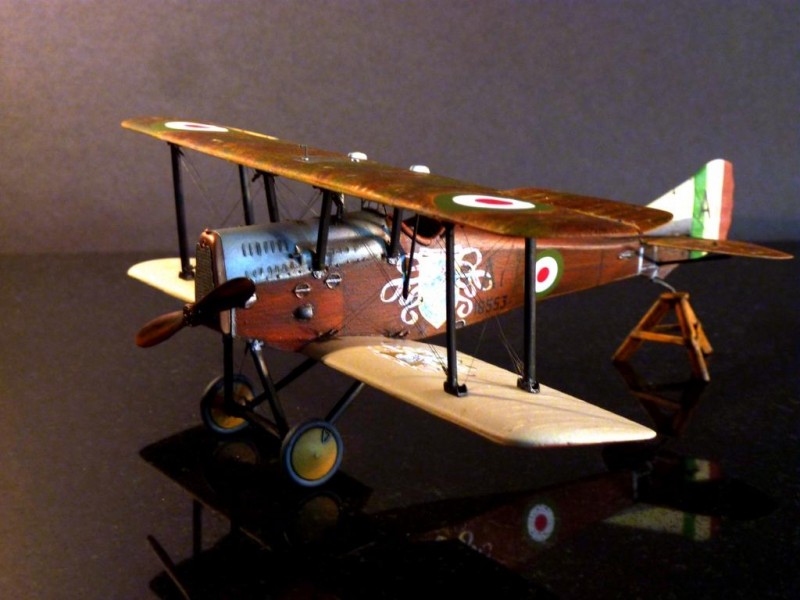
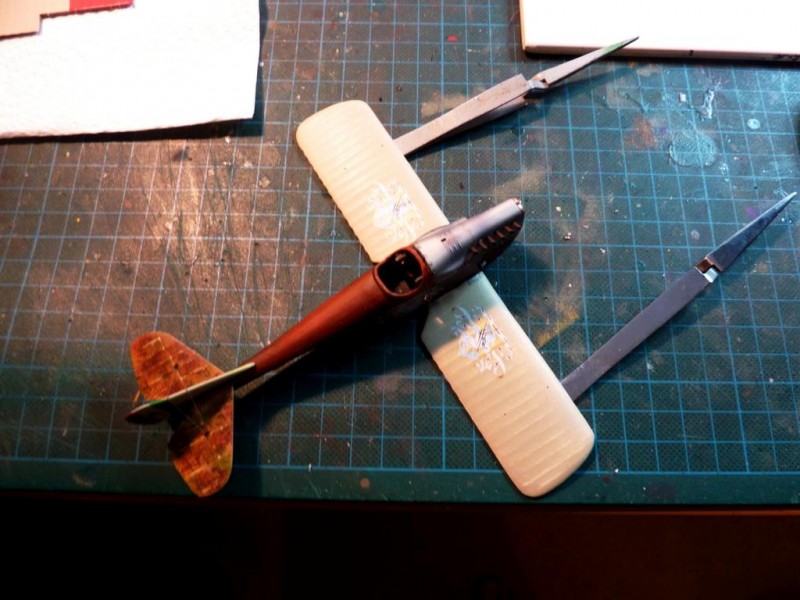
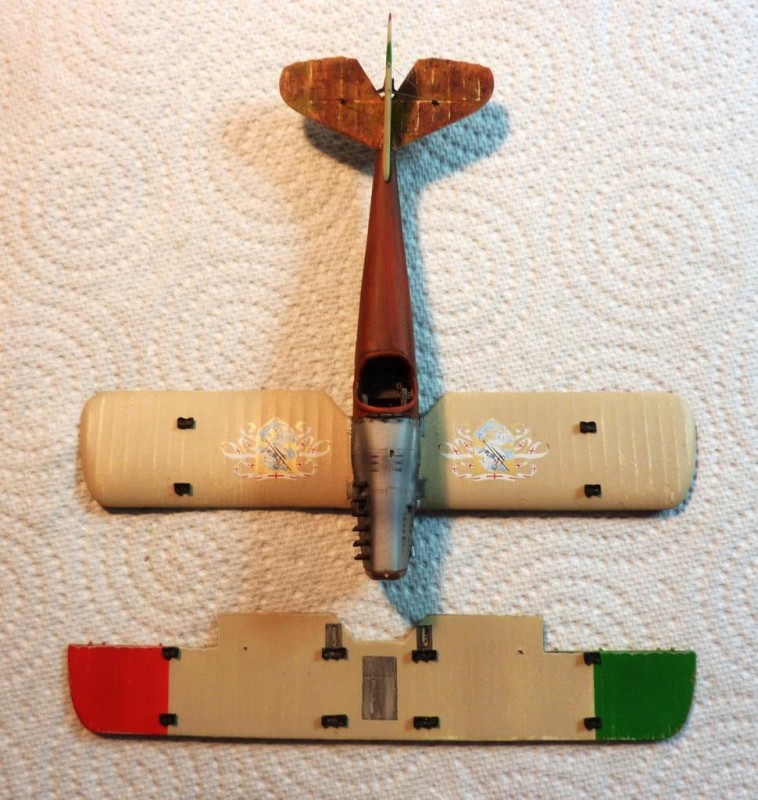
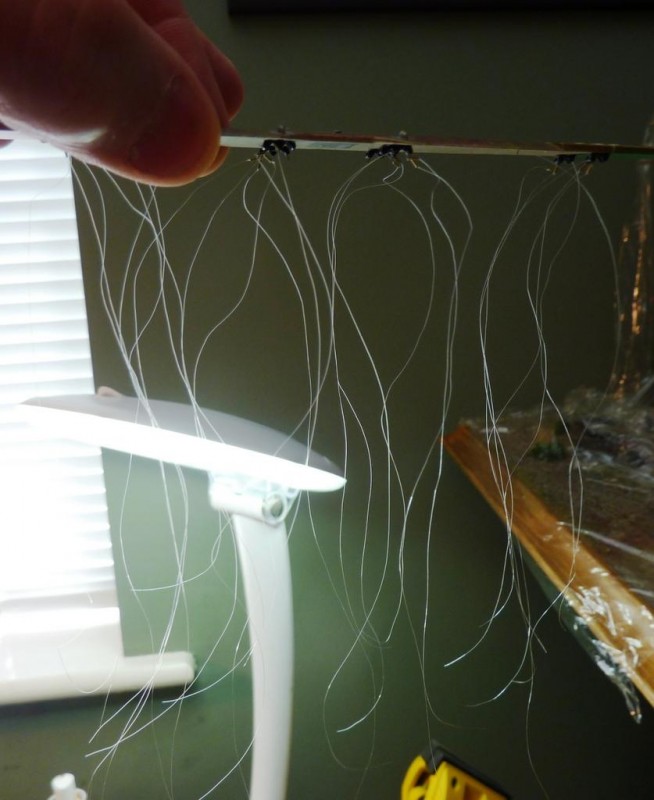
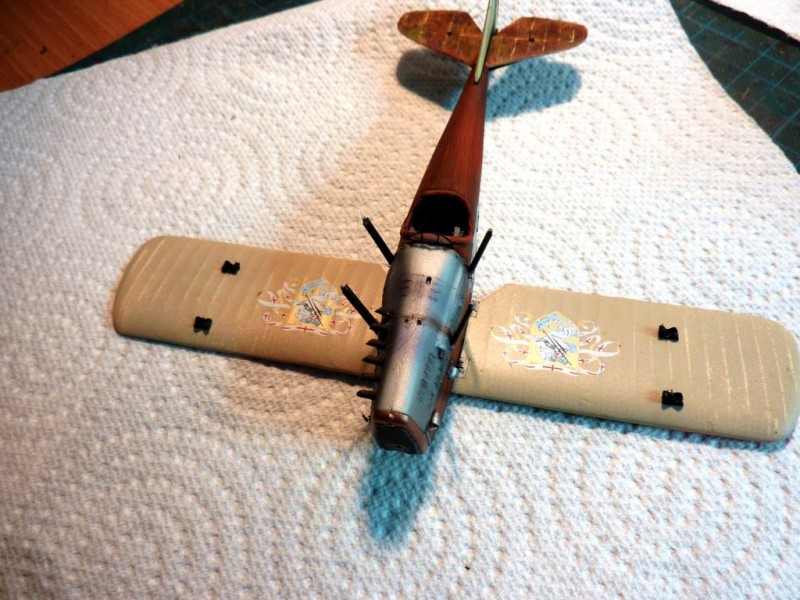
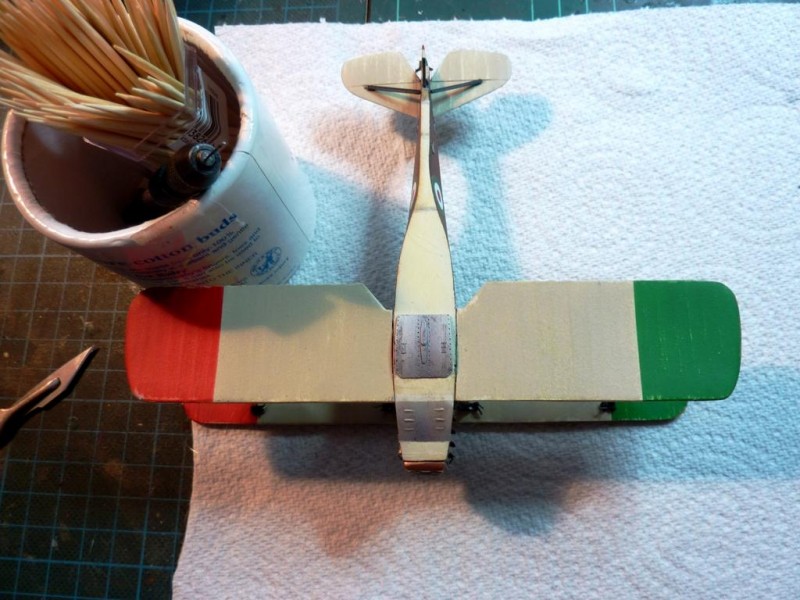
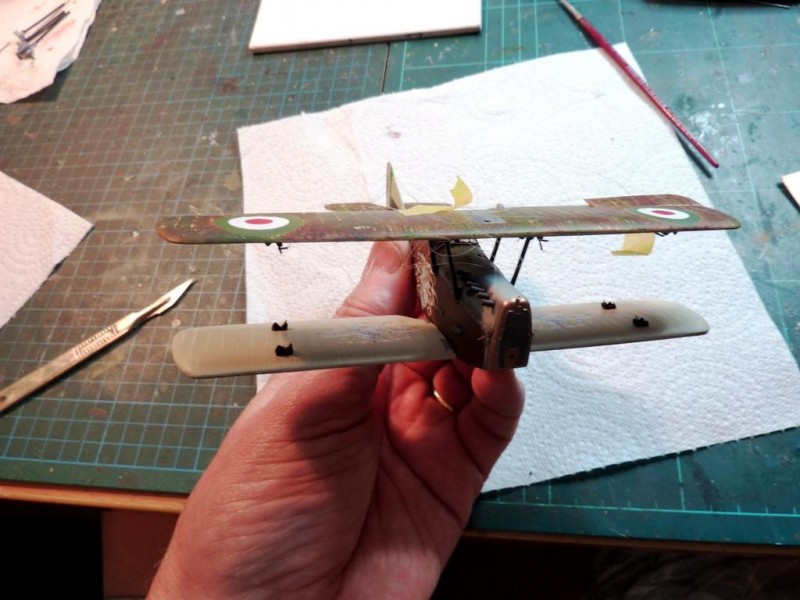
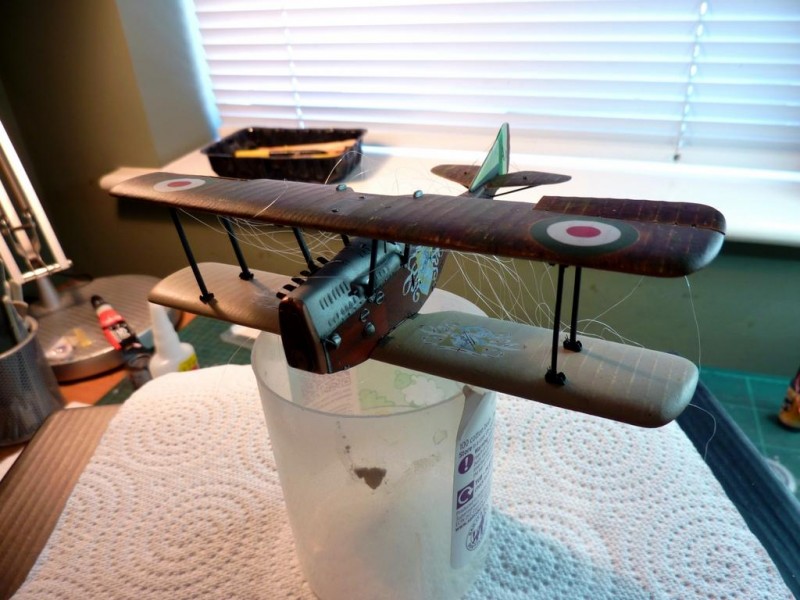
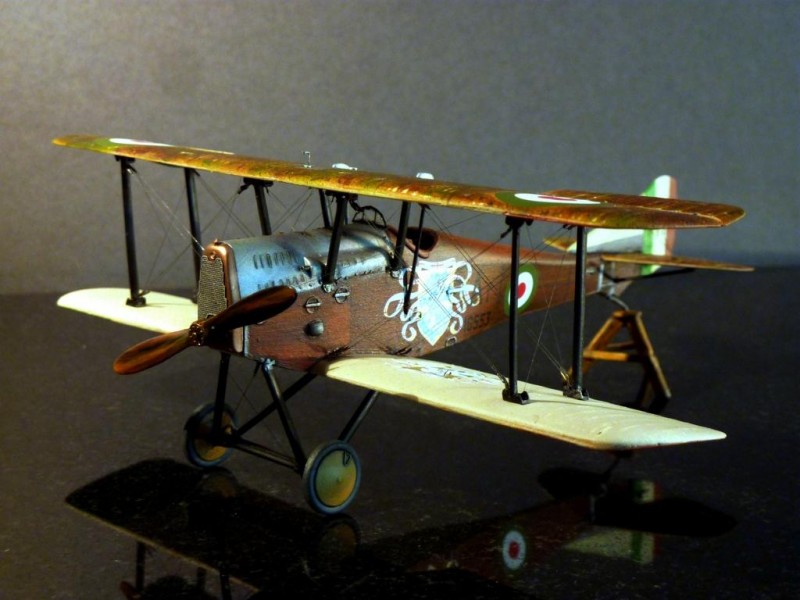
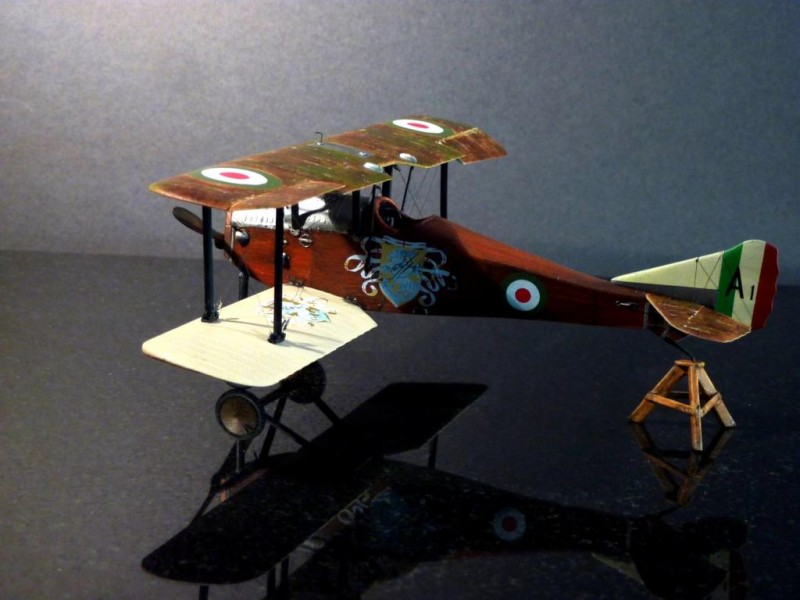
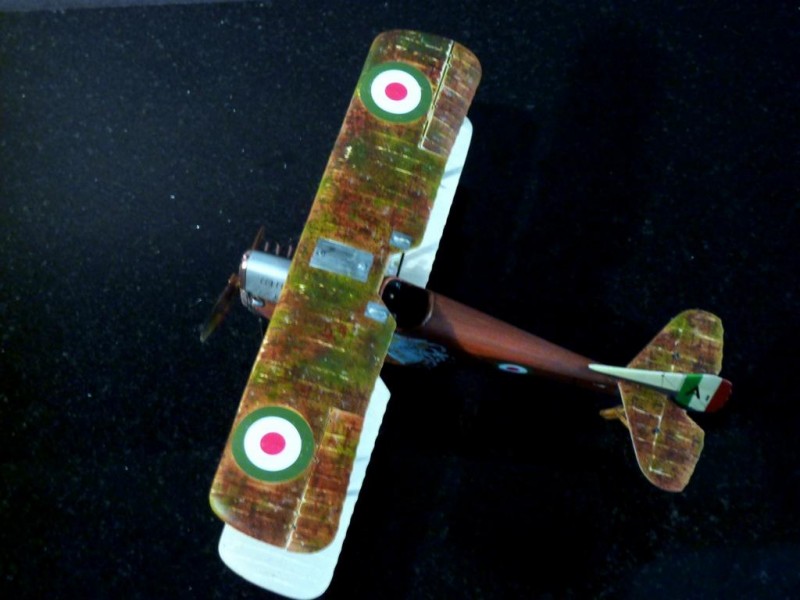

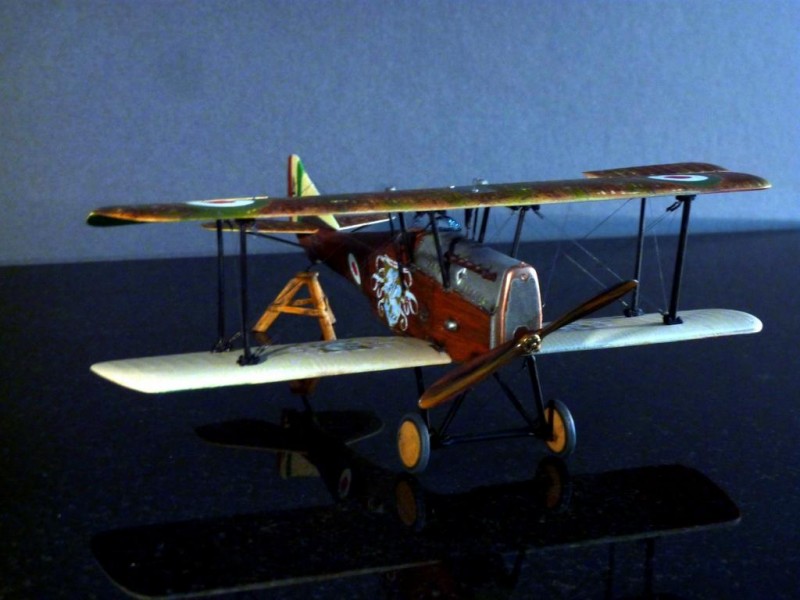


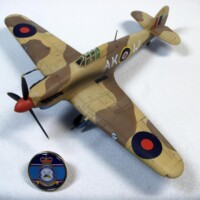
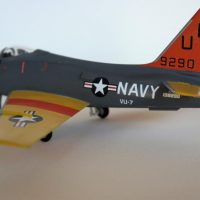
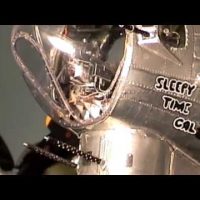
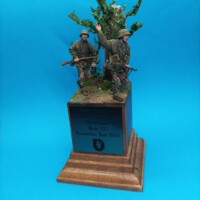
Beautiful model, just superb in every way. Love the complex rigging and the painted wood effect.
Thanks, Paul.
Impressive project, Rob. Those flying wires have a great sense of tension and must have taken a prodigious level of concentration to get to that standard.
My mind boggles when you think only 14 years before this bird was made man had yet to fly. Incredible, really. I have to say that I've never been a biplane enthusiast until following your recent builds, which have given me a whole new appreciation of the engineering involved. Both in the models and the real aircraft.
Thanks, Rob.
Cheers, David. Thanks for the feedback.
A real beauty Rob! Love everything about it - the wood work, the metal work, the overall painting, the rigging, and the nicely detailed report and photos. Since I will probably never model many (if any) of these string-bags, I can vicariously live them through you!
Thanks, Greg. A small but very busy model.
Cracking job on this Rob.
Cheers. Simple but difficult.
Lots of work in that - very nice result. I've got the Fly Models kit - this makes me think I might doit.
Don’t know the Fly version. This is the second of two Karaya kits but next projects in plastic, although still more obscure Great War types. The Karaya not bad for a £25 bag of resin, but you need your head screwed on to get there. Cheers for the comment.
Wow Rob ! You my friend are a Biplane building machine... The rigging looks fantastic, as does everything else about this build.
Well done my friend... Two thumbs up !
I like it... a lot. I was hoping you would be able to find a photo of the original. It helps to breath life into our builds when you can.
These old biplanes are lucky to have survived as long as they did. Wood normally doesn't fare too well over a long time. It shrinks and the cloth covering rips apart juts due to age. I had heard that the unrestored Curtiss Jenny that was on display at the NASM years ago, was removed once they realized the holes in the fabric were caused by people dropping chewing gum onto the plane from the upper level.
They get that delicate... it's surprising that there are any left at all from this era. To see one in person is a sight to behold.
As is your build my friend.
Very well observed comment re fragility of these surviving machines. Thanks, Louis.
I have to concur with the masses, Rob...VERY nicely done indeed! 🙂
Cheers, Craig.
Absolutely fabulous build and thanks also for posting the original's picture!
Thanks, Michel.
Fantastic attention-to-detail, Rob. I agree with all the others - these early kite-planes are soooo interesting and your build, painting, and rigging are absolutely "top shelf!"
Bravo !
Thank you, Jeff.
Everything seem to be amazing: wood, metal, wires, fabric ...
Many thanks for the kind comment, Roberto.